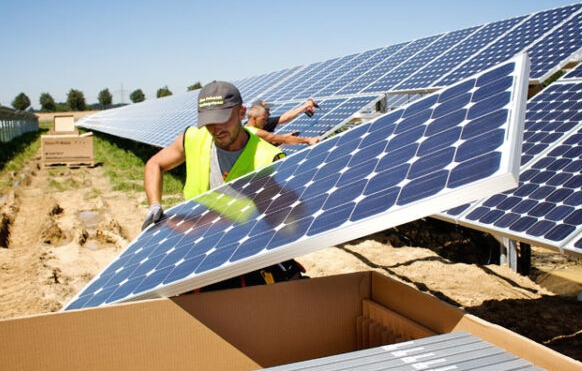
China’s agenda in Latin America has diversified in the last decade, moving from the so-called “checkbook diplomacy” and high trade intensity to a bet, still pragmatic, but more anchored in a global civilizational ethic. As an emerging country, measuring its strength in a new concert of powers, the Asian giant has accumulated political capital — especially in the developing South — that allows it to set its own standards of conduct and to move selectively away from its characteristic neutrality (or indifference) to more normative issues such as sustainability.
Not without contradictions, China’s underpinning of an “ecological civilization” (since 2008) has materialized in Latin America through the financing of renewable energy infrastructure projects. That represented 6% of its Foreign Direct Investment (FDI) announced between 2018 and 2023. China has identified in this sector a point of balance between development and care for the environment, without contradicting the demand for ecological justice that with greater or lesser vehemence has been defended by several governments in the region, especially from the progressive political arc.
The energy transition in the region between leaps and stalemates
The vast natural resources of Latin American countries allowed them to exceed 310 gigawatts of renewable energy production by 2022. The continent’s main matrix has traditionally been hydroelectric, but recent years have seen a growth in wind and photovoltaic capacity. According to the World Economic Forum’s Energy Transition Index published in 2023, Brazil is the first to appear in the ranking in 14th place — even higher than China, which ranked 17th — followed by Uruguay (23rd), Costa Rica (25th), Chile (30th) and Paraguay (34th). However, beyond these cases, as a region, the percentage of renewable sources in the electricity matrix has stagnated at 59%.
The variable geometry of Chinese “green investment”
Chinese investment in the region has been neither homogeneous nor static. At least every five years it has tended to recalibrate itself either by strategic calculation or due to external factors such as the pandemic, disputes with the United States, or the change of governments in the region. In that sense, there is a marked trend from 2014 to 2019 toward the stabilization of green investment, although after the pandemic there was a general withdrawal of Chinese investments, not only in the region but in the world, due also, to the moderation of “its pace of economic expansion”.
China has positioned itself as the global leader in renewable energy investments, and in this context, the region has become the destination of a third of its investments in wind and solar energy. According to a study by Brazil’s Institute for Applied Economic Research (IPEA, for its acronym in Portuguese), “FDI by Chinese companies in clean energy tripled since the end of 2018, rising from US$960 million to US$3.8 billion in 2022. Of that total, it is important to highlight that 55% was in the greenfield FDI modality”, a type of investment aimed at exploring projects from scratch. Brazil, Chile, Mexico, Colombia, and Argentina have been the largest recipients of Chinese investment in solar and wind energy projects.
The problem of regional fragmentation
Despite this encouraging outlook, diminished regional integration and political fragmentation do not favor either Latin America or China in deepening their green alliance. The China-CELAC forum has attempted to guide inter-bloc relations but lacks a permanent institutional framework to ensure the achievement and fulfillment of its objectives. Therefore, China has had to work on its ties at the bilateral level, from a multidimensional perspective, including a diversity of non-state actors.
Although the region has not built a robust institutional architecture around environmental issues, it has done so relatively well in the energy sector. In 2023, Latin American Energy Organization (Olade) published the “Strategy for a more renewable Latin America and the Caribbean”, which indeed highlights the significant differences between countries, especially in their fossil fuel dependency ratio and level of state leadership. However, there is no direct reference in the strategy to China’s role in this area.
The U.S. reaction
The United States has become concerned about China’s leadership in investing in renewable energy projects in the region. Even though, in February last year, the Asian giant’s climate envoy Xie Zhenhua and his U.S. counterpart John Kerry made a friendly commitment to triple renewable energy worldwide by 2030. Months later, in November, Treasury Secretary Janet Yellen insisted on the need to implement a resilient supply chain strategy that includes areas such as clean energy and contains Chinese influence. The consensus that it was primarily competition for fossil resources that increased security risks and interstate conflict, rather than competition for renewable resources, seems to be limited here.
The trend is that both China and the United States — mainly through the Inter-American Development Bank (IDB) — will play the clean energy card in the region. Because of its geopolitical weight, Brazil is a key player that can alter the balance of power between both actors and articulate a common continental agenda as the driving force behind CELAC and the presidency of G-20. The urgent drift of Latin American countries is to create an institutional ecosystem of energy transition that allows them, in the long term, to overcome their extractivist pattern and, in the short and medium term, to reduce their tendency to economy based on the primary sector.


